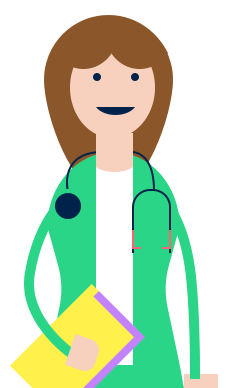Learn about symptoms and causes of sun protection, self-help treatment options, medication and when to seek medical help.
What is sun damage?
Over exposure to the sun and artificial ultraviolet (UV) radiation can cause sunburn, skin and eye damage, premature aging, wrinkling, brown pigmentation and cancer.
UV radiation can pass through water, and clouds do not block out UV radiation.
Your skin becomes more tanned as a response to sun damage and will start to become darker. The outer layers become thicker in order to provide better protection against sun rays. However, the harmful rays are still able to get through this natural barrier. That is why additional protection is important to prevent damage to the deeper layers of your skin.
Certain medications can also increase your skin’s sensitivity to the sun, some examples include:
- Certain Antibiotics (eg. Doxycycline, Ciprofloxacin)
- Certain blood pressure medications (eg. Hydrochlorothiazide)
- Certain acne medications (Eg. Isotretinoin)
- Ketoprofen gel
How to prevent sun damage?
- Frequently apply sunscreen with Sun Protection Factor (SPF) 30 or higher to maintain protection
- Dry your skin well before applying sunscreen
- Apply sunscreen 20 to 30 minutes before going into the sun
- Apply sunscreen generously and evenly over the exposed areas of the whole body
- Wait for the sunscreen to dry before putting on your clothes or makeup
- If you apply non water-resistant sunscreen, you should reapply it after every swim or after heavy perspiration. Make sure your skin is dry first before applying.
- If you apply water-resistant sunscreen, you should reapply it every two hours or every hour if you have been swimming.
- Wear sun-protective clothing
- Put on a hat to protect your scalp and face
- Avoid prolonged exposure to the sun
- Wear sunglasses to protect your eyes
- Use SPF-containing lip balm on your lips
What are the symptoms of sunburn?
The symptoms of this condition can include the following:
- Changes in skin tone, such as pinkness or redness
- Skin that feels warm or hot to the touch
- Pain and tenderness
- Swelling
- Small fluid-filled blisters, which may break
- Headache, fever, nausea and fatigue – If the sunburn is severe
- Eyes that feel painful or gritty
What can I do to treat sunburn?
Sunburn can be treated in the following ways and you can approach your pharmacist to get the following medications.
- Aloe vera gel (Gels with no alcohol content are preferred)
- Calamine lotion
- Scent-free moisturizers
- Hydrating gels
- Paracetamol
- Ibuprofen
When do I need to see a doctor?
Although sunburn can be treated without a doctor’s consultation, there are times where the condition might be more serious.
If your condition does not get better in 1 week or gets worse, you should see a doctor. You should also see a doctor if you experience any of the following:
- Freckle, mole or spot that appears or changes colour, size or shape
- Any unusual skin conditions that do not heal within 4 weeks
- The sunburnt person is younger than 1 year old
- The burn has blisters or the skin looks white and feels numb
- The sunburn is accompanied by:
- Fever above 38.5°C
- Headache
- Severe pain
- Dehydration
- Confusion
- Nausea
- Chills
What else can I do to manage sunburn?
Other than using medications to treat the condition, sunburn can also be managed by the following methods:
- Cooling the skin by cleaning with a towel dampened with cool tap water
- Taking a cool water bath
- Drinking enough water
- Protecting the sun burn from further exposure to sun
- Avoid products that can irritate the skin (e.g. Certain pimple gels)
- Never apply ice or ice water directly to a burn
Disclaimer
This article is jointly developed by members of the National Medication Information workgroup. The workgroup consists of cluster partners (National Healthcare Group, National University Health System and SingHealth), community pharmacies (Guardian, Unity and Watsons) and Pharmaceutical Society of Singapore. The content does not reflect drug availability and supply information in pharmacies and healthcare institutions. You are advised to check with the respective institutions for such information.
The content above is solely for informational purposes only and is not intended as a substitute for the advice provided by your physician, pharmacist or other healthcare professional. You should not use the information for diagnosing or treating a health problem or disease, or prescribing any medication or other treatment. Always speak with your physician, pharmacist or other healthcare professional before taking any medication or supplement, or adopting any treatment for a health problem.















